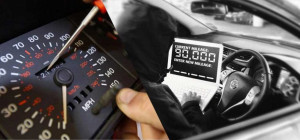 If you find financing too complicated or too dragging as a way to acquire a new delivery truck or van, you should consider buying a used cargo van especially if you have the resources to purchase it. But before you go out to find the vehicle that suits your budget, you must be sure to arm yourself with sufficient knowledge about effective ways to find one that gives real value to your money.
If you find financing too complicated or too dragging as a way to acquire a new delivery truck or van, you should consider buying a used cargo van especially if you have the resources to purchase it. But before you go out to find the vehicle that suits your budget, you must be sure to arm yourself with sufficient knowledge about effective ways to find one that gives real value to your money.
Another thing you should keep in mind is to take your time to select the best. The market is pregnant with used vehicles for sale and you should not fall prey to the pressures or sweet talks of salesmen. By avoiding the rush, you will be able to choose the best for your price range. If you drift away from your budget, you’ll probably end up over-extending yourself financially or buying a low quality vehicle that is not commensurate to the price you pay.
One good point to remember when buying a used vehicle is to find one that is equipped with maintenance records. Furthermore, you also need to arm yourself with additional knowledge of finding out the quality of the car, truck or van you want to buy.
Here are 12 simple pointers for checking the quality of a used vehicle:
1.Inspect the vehicle in broad daylight.
Inspecting a used car, van or pickup in a poorly-lit place will definitely defeat its purpose. It is always prudent to do an inspection where everything is visible. This makes it easier for you to see possible defects and determine the color and level of fluids.
2. Check panels and edges of openings for corrosion or putty repair.
Run your hand along the edges of doors and other openings to check for corroded edges. Inspect the panels starting from the back of the vehicle to its front. If you notice a wavy or uneven portion, check it with a magnet to make sure that it is not a result of plastic or putty repair.
3. Inspect the roof for raised spots.
A roof that shows raised spots indicate that rust is developing underneath. If this doesn’t deter you from buying the vehicle, you should do a more detailed inspection in order to expose areas that need repair, and to be able to negotiate for a fair price.
4. Check the inner side of each tire.
Do this to make sure there aren’t any signs of brake fluid leakage and tread wear.
5. Check the engine compartment.
Before you raise the hood, you must make sure that the engine is cool. Once the compartment is open, remove the radiator cap to get a good view of the coolant fluid. It should be greenish in color, but if it not, it should be contaminated with rust. This is not a good sign because rust can trigger overheating. If you want to make sure about the quality of the coolant, you can buy an inexpensive tester to do it.
The next thing you need to see is the air filter. If the air cleaner or the surface of the engine itself is filled with excessive dirt, grease or oil deposits, that engine is certainly neglected. Also look for signs of recent engine work like edges of new gaskets. This should tell you that the engine just had a breakdown even if the vehicle’s odometer indicates low mileage.
If the transmission is automatic, pull out the transmission dip stick and smell it. If it smells of burnt cork, you should back out and proceed to your next prospect. That smell is telling you that that transmission will be in trouble soonest.
6. Start the engine.
Run the engine in high idle setting to listen for thuds or knocks. These sounds are tell-tale signs of a bad crankshaft or connecting rod bearing, which means a very costly repair is about to take place.
7. Drive the vehicle.
After running the engine in idle mode, drive the vehicle to check the brakes. Put the truck in park and allow it to run in idle mode. This time, you should get out of the vehicle to check the tailpipe for leaks. Do this by covering the tailpipe opening with the rag. If you feel pressure from the tailpipe, it means the truck’s exhaust system has no leaks. After this, go back to the driver’s seat. Put the vehicle in drive while stepping on the brake to check if the idle is doing well.
8. Check to ensure everything is working.
Switches are important as they play a big role in the safety or convenience of the driver and the passengers. This includes lights, wipers, air, etc.
9. Check covered/hidden compartments.
By this time, you should turn off the motor to inspect hidden parts of the body. If parts of the vehicle you are buying are covered with mat, you should raise that covering for severe corrosion. You don’t need to worry if you find light rust in there. Even new cars and trucks have it. You also need to check the trunk for not just to ensure that it is not corroded but to check the wiring at the rear. While doing this, look for cut, taped or worn out wires to ensure that short circuits are prevented.
10. Test-drive the vehicle.
Doing this check would yield better results if you take somebody with you to observe things you might not notice. Drive the van or car for at least 10 miles. Shut the engine off and allow it to cool down a bit then start then it again. If the engine doesn’t start immediately, you should have a mechanic check and tune it up. Once the engine starts, accelerate slowly to make sure the transmission is working smoothly. Do this until the vehicle reaches highway speed.
11. Test the brakes.
Choose a safe spot where you can step on the brakes to see how they work. After this, you should move to a rough road to check the shock absorbers and see how they behave in that terrain. After the test drive, bounce the front end of the truck. If the number of bounces exceeds three, the shocks should be replaced.
12. Check the odometer.
Some sellers tamper odometer readings to deceive buyers about a vehicle’s actual usage. But with some common sense, you will be able to determine if your vendor is playing a fair game. For example, a 1985 pickup with an odometer reading of 30,000 miles should trigger suspicion. Other tell-tale signs of vehicle usage include excessive wear on the brake pedal, armrest and upholstery, and the presence of numerous pits on the windshield.
Contributed byhttps://www.truck-n-trailer.com/







